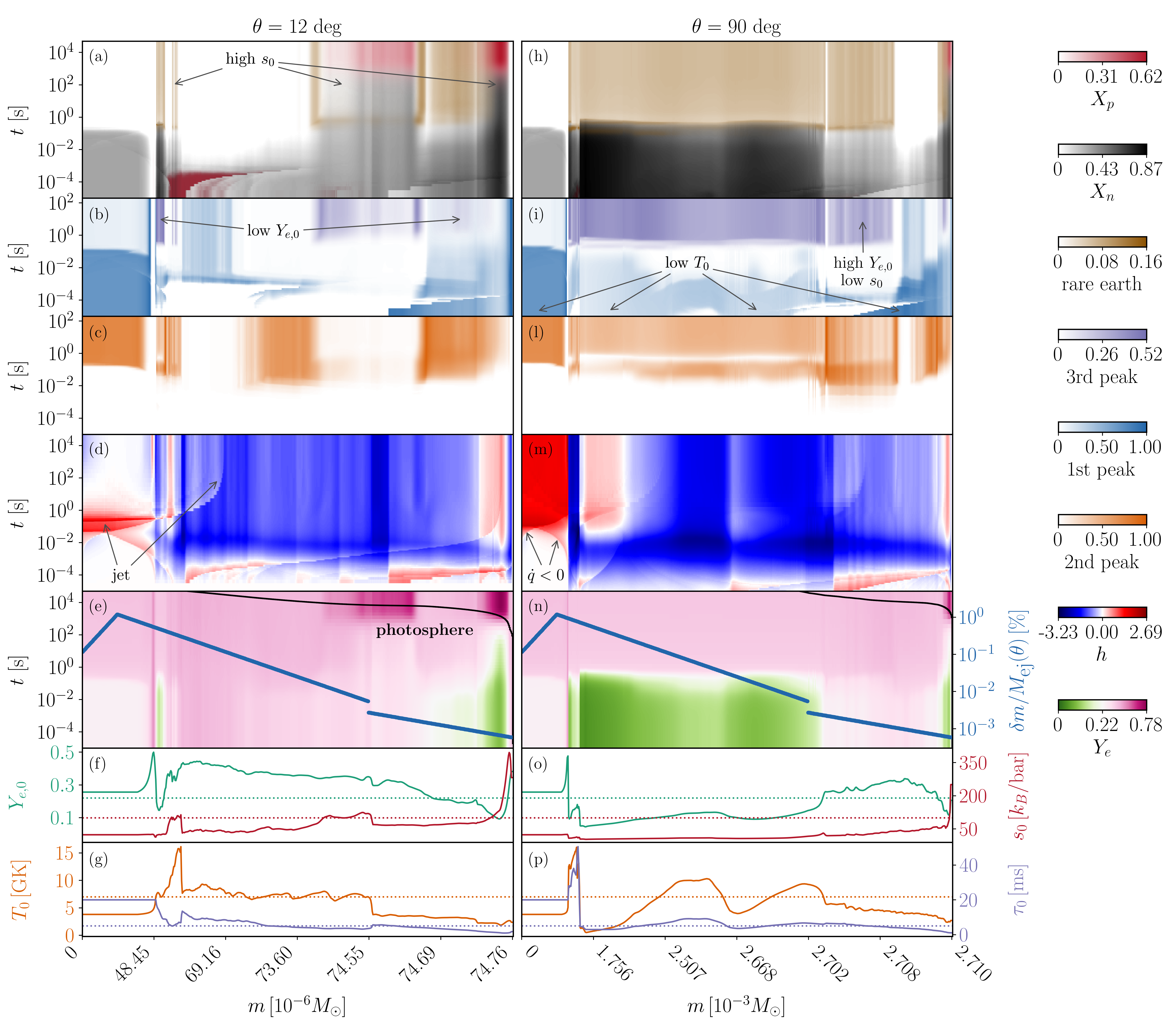Elements formation in radiation-hydrodynamics simulations of kilonovae
Understanding the details of r-process nucleosynthesis in binary neutron star mergers (BNSMs) ejecta is key to interpret kilonovae observations and to identify the role of BNSMs in the origin of heavy elements. In 2403.13883 we present a self-consistent 2-dimensional (ray-by-ray) radiation-hydrodynamic evolution of BNSM ejecta with an online nuclear network (NN) up to the days timescale. For the first time, an initial numerical-relativity ejecta profile composed of the dynamical component, spiral-wave and disk winds is evolved including detailed r-process reactions and nuclear heating effects. A simple model for the jet energy deposition is also included. Our simulation highlights that the commonly assumed approach of relating the final nucleosynthesis yields to the initial thermodynamic profile of the ejecta can lead to inaccurate predictions. We also find significant deviations (up to four orders of magnitudes) in the abundance evolution of several analyzed elements compared to previous predictions employing the NN in post-processing. The presence of a jet affects elements production only in the innermost part of the polar ejecta, and it does not alter the global nucleosynthesis results. Overall, our analysis shows that employing an online NN is highly desiderable in order to obtain reliable predictions of r-process nucleosynthesis and ejecta evolution.
Read more
